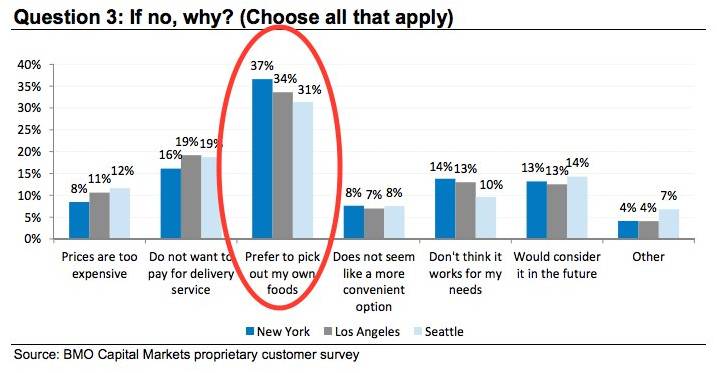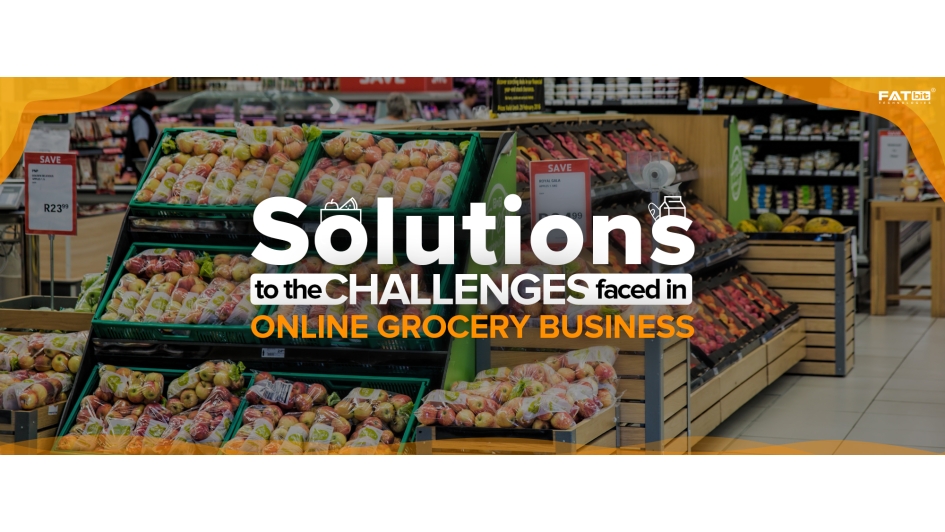That definitely makes one wonder, when the majority of other eCommerce sectors are doing great, what’s the reason behind eGrocery segment not booming enough?
It is due to the following challenges, which also represent the growth opportunities in the sector:
Challenge 1: Storage & Delivery Cost
Perishable items require more investments on storage & delivery infrastructure (refrigeration). Special warehouses, delivery containers and specialized delivery vans must be there to ensure perishables are delivered fresh. All this requires a lot of capital.
Solution: Just-in-time supply system integrated with state-of-the-art inventory management API can minimize inventory costs. Apart from that, teaming up with an efficient delivery service provider that has the right vehicles to ensure customer satisfaction is a good idea from economic and operational perspectives.
Challenge 2: Low Profit Margins
Customers are reluctant to pay for convenience charges and want to get faster delivery along with quality assurance. Catering to this particular need can actually turn out as a financial nightmare for eGrocery retailers.
Solution: Implement an asset-light business model. Instead of acquiring your own fleet of vehicles and staff to carry out the deliveries for you, hire a logistics company. That will cost you less than the cost of vehicles and salaries combined. While signing the contract agreement with the delivery service provider, make sure you mention that between your office gate and customer’s doorstep, the goods to be delivered are the service provider’s responsibility.
Reduce operational cost of your online grocery business
Challenge 3: Inefficient Delivery
It’s hard to break the threshold called hyper-local segments with one delivery system, especially when the customers expect same-hour delivery. Product quality, time, and delivery cost – all these critical factors impose a huge challenge for an efficient delivery system.
Solution: Logical decision would be to team up with reliable hyper local delivery service providers. Although not directly related to grocery delivery, Amazon India presents a good example of this, as they partnered with Indian post to improve their reach in rural areas of India.
And then there’s a futuristic solution – delivery through drones. It may seem a viable solution only in the near future, but it would soon become an essential one. Amazon has begun it in the US. Various Chinese ecommerce retailers are also using it extensively. It is true that drone delivery will incur you huge infrastructure/equipment expenditure, but once done, things will be just gliding seamlessly.
Related: Global Market Analysis of Online Grocery Shopping
Challenge 4: Consumer Habit
Regardless of the number of online grocery businesses opening up, and the convenience provided by online shopping, people still prefer buying grocery items from a physical store. The graph below clearly reflects that consumer behavior.

The stats are from the US, but just one glance at it and you will realize this preference of picking their own food is more common than anything else in the world. And that’s because of the human nature; we just want to take a whiff of that melon; we want to hold a potato in our hand before being sure of outing it in the basket.
Solutions: Merging the online & offline grocery shopping experience is a good idea in this regard. Here are some ways to improve customer experience while keeping your expenses low:
- Customer gets to verify items’ availability online & then visits the store, confirms the quality and buys those items.
- Customer places an order through an online portal & picks up the order at the physical store.
The above two models save the delivery cost. Now, let’s talk about two alternates that reduce the operational cost while improving customer experience:
- Customer visits offline store, orders the desired items online (through in-store setup) and the goods are delivered to their home.
- Self-checkout at stores through technologies like iBeacon to let customers avoid the long cash-counter queues. For instance, check out what Amazon Go is doing. Your customers will definitely love this type of shopping.
Pre-orders & curb-side pickups are among other interesting techniques to enhance customer experience. In fact, they are already a hit among customers in many parts of the world. To implement, simply offer a feature to pre-order groceries and schedule a delivery time or select a pre-decided pick-up spot. It saves customer’s time and saves you last-mile delivery expenses.
Conclusion
The online grocery industry is still in its nascent stage and has just started to pick up some pace. It is certain that the sector will become more efficient & profitable with time as new technological advancements will come along.
No doubt the market will remain challenging for the current generation of online grocery retailers. But grocery businesses that will stick to adding more value, will also garner the advantage of being the early bird, since they already have captured the market while it continues to become mainstream with new technology.
Explore impeccable opportunities with our unique multivendor grocery platform Growcer
Disclaimer: The Blog has been created with consideration and care. We strive to ensure that all information is as complete, correct, comprehensible, accurate and up-to-date as possible. Despite our continuing efforts, we cannot guarantee that the information made available is complete, correct, accurate or up-to-date. We advise - the readers should not take decisions completely based on the information and views shared by FATbit on its blog, readers should do their own research to further assure themselves before taking any commercial decision. The 3rd party trademarks, logos and screenshots of the websites and mobile applications are property of their respective owners, we are not directly associated with most of them.




Comments(1)